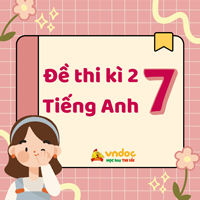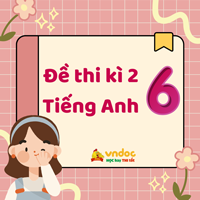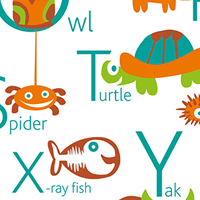Trắc nghiệm Reading tiếng Anh lớp 11 Unit 2 Relationships
Nối tiếp bộ đề ôn tập tiếng Anh 11 mới theo Unit, tài liệu bài tập trắc nghiệm tiếng Anh Reading part Unit 2 có đáp án dưới đây do VnDoc.com sưu tầm và đăng tải. Đề luyện tập tiếng Anh gồm nhiều đoạn văn tiếng Anh khác nhau xoay quanh chủ đề bài học tại Nhà trường giúp các em học sinh lớp 11 ôn luyện hiệu quả. Mời thầy cô, quý phụ huynh và các em học sinh tham khảo, download tài liệu.
Tiếng Anh 11 Unit 2: Relationships
Đề luyện tập tiếng Anh lớp 11 sách mới Unit 2 phần kỹ năng đọc (Reading) có đáp án dưới đây nằm trong bộ đề trắc nghiệm tiếng Anh 11 mới theo từng Unit do VnDoc.com sưu tầm và đăng tải. Tài liệu tiếng Anh gồm nhiều dạng bài đoạn văn tiếng Anh khác nhau giúp các em học sinh cải thiện kỹ năng làm bài hiệu quả.
Bài 1. Read the following passage and mark the letter A, B, C, or D to indicate the correct word or phrase that best fits each of the numbered blanks.
In a healthy relationship, both partners respect, trust and embrace (1) ____ differences. Both partners are able to communicate (2) ____ their needs and listen to their partner, and work to resolve conflict in a rational and (3) ____ way. But maintaining a healthy relationship (4) ____ for skills many young people are never taught. A lack of these skills, and (5) ____ up in a society that sometimes celebrates violence or in a community that experiences a high (6) ____ of violence, can lead to unhealthy and even violent relationships among youth.
Dating violence (7) ____ psychological or emotional violence, such as controlling behaviours or jealousy; physical violence, such as hitting or punching. More than 20 per cent of all adolescents report having experienced (8) ____ psychological or physical violence from an intimate partner - and underreporting remains a concern.
Adolescents, (9) ____ older adolescents, often have romantic relationships, which are long-term, serious, and intimate. Society has a responsibility to provide young people with the resources, skills, and space (10) ____ to safeguard their physical and emotional well being in these relationships. Youth-serving professionals, educators, and parents can help young people in need access services to (11) ____ dating abuse victimisation. Research also has shown that programmes intended to prevent dating violence can be (12) ____.
Question 1: A. another's B. each another's C. each other's D. one another's
Question 2: A. effective B. effectively C. effectiveness D. ineffective
Question 3: A. non-violent B. violently C. violent D. violence
Question 4: A. asks B. calls C. looks D. requires
Question 5: A. bringing B. growing C. raising D. taking
Question 6: A. amount B. number C. rate D. scale
Question 7: A. comprises B. consists C. contains D. includes
Question 8: A. both B. either C. neither D. whether
Question 9: A. especial B. especially C. special D. specially
Question 10: A. necessitating B. necessarily C. necessary D. necessity
Question 11: A. address B. confess C. deny D. obey
Question 12: A. succeed B. success C. successful D. successfully
Bài 2. Read the following passage and mark the letter A, B, C, or D to indicate the correct answer to each of the questions.
Let's see if you can correctly answer the following question: At what age are Latter-day Saint youth allowed to date? Of course, you probably immediately said, "16". OK, then, how about this one: At what age are you allowed to have a boyfriend or girlfriend? You may be thinking, “Um, 16. Didn't I just answer that?" Well, if that was your answer, then, even though you aced the first question, you missed the second one. Just because you can date when you turn 16 doesn't mean you should immediately start looking for a steady boyfriend or girlfriend. [….]
To begin with, there are two different types of dating: casual dating and steady (or serious) dating. The distinction between the two has to do with exclusivity. With casual dating, there is no exclusivity. The two people aren't “a couple” or “an item”, and they don't refer to each other as a “boyfriend” or “girlfriend”. They don't pair off. People who are casually dating are simply friends. This is the kind of dating the Church encourages you to do after you turn 16. You should put aside a need to find a “one and only”. If you're dating casually, you don't expect a relationship to become a romance. You have fun; you do a variety of things with a variety of people. On the other hand, steady dating means the couple is exclusive with one another. They expect each other not to date anyone else or to be emotionally or physically close with other people. Couples who date seriously consider the future, because there is a real possibility they could stay together. This is the kind of dating the Church encourages young adults (generally, people in their 20s) to progress toward, because that's the age when they should be thinking of marrying. [….]
Question 13: It can be inferred from the first paragraph that ____.
A. dating doesn't mean having exclusive boyfriend or girlfriend
B. teenagers are supposed to have a steady boyfriend or girlfriend
C. teenagers date as many boyfriends or girlfriends as they can
D. young people shouldn't be allowed to date at 16
Question 14: The word “aced” in paragraph 1 is closest in meaning to ____.
A. gave up
B. misled
C. succeeded in
D. understood
Question 15: According to the passage, what is NOT true about casual dating?
A. You can be friend with each other.
B. You don't pair off exclusively.
C. You find your "one and only”.
D. You meet different kinds of people
Đáp án
| 1. C | 2. B | 3. A | 4. B | 5. B | 6. C | 7. D | 8. B |
| 9. B | 10. C | 11. A | 12. C | 13. A | 14. C | 15. C |
Trên đây là Bài tập trắc nghiệm tiếng Anh lớp 11 chương trình mới Unit 2 Reading. Mời thầy cô tham khảo thêm nhiều tài liệu ôn tập Tiếng Anh lớp 11 cả năm khác như: Để học tốt Tiếng Anh lớp 11, Bài tập Tiếng Anh lớp 11 theo từng Unit trực tuyến, Đề thi học kì 1 lớp 11, Đề thi học kì 2 lớp 11,... được cập nhật liên tục trên VnDoc.com.


















